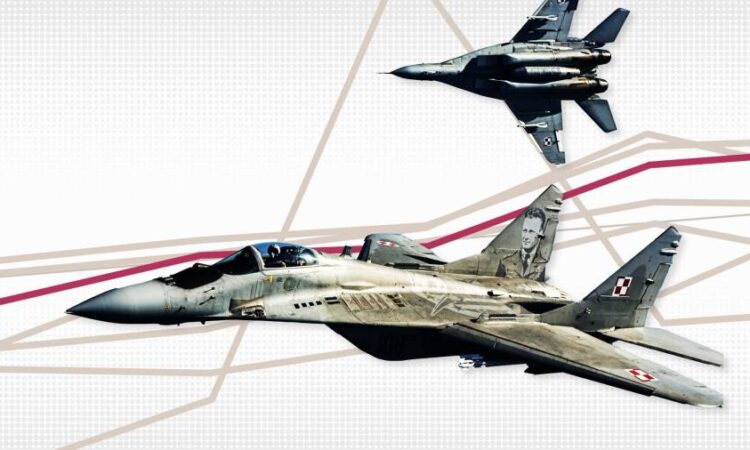
Poland may struggle to fund its multibillion-dollar plan to buy a record number of weapons in response to Russia’s invasion of Ukraine, experts have warned.
Most Nato countries have beefed up their military spending as a result of Vladimir Putin’s war, a seismic event that prompted Germany to proclaim its own Zeitenwende, Finland to join the military alliance and France to pledge meeting the Nato spending target sooner. But Warsaw stands out as it is on track to spend more on defence than any other Nato ally, relative to its gross domestic product.
The rightwing government of premier Mateusz Morawiecki plans to spend 4 per cent of GDP on defence this year, double the alliance’s target. While in absolute terms the Polish spending pales in comparison with the US or UK, the decision has prompted questions over how Warsaw will fund the change, including what areas of public spending might be cut to compensate.
Ahead of parliamentary elections this autumn, Poland’s government has told voters that only big military purchases can keep them safe. With Russia’s aggression increasing the nationalist rhetoric within the country, opposition parties have not attacked this argument but instead criticised the government for brushing aside the cost of buying weapons.
After high yields forced Poland to scrap a bond sale in October, former defence minister and opposition politician Tomasz Siemoniak wrote on Twitter that “the defence ministry is buying without a plan and apparently without money”.
Last year Poland was already proportionally Nato’s third-highest spender, after Greece and the US. In contrast, Germany and France are still struggling to meet Nato’s 2 per cent spending target, despite pledges to significantly increase their defence budgets.
As well as other significant military contracts, Warsaw announced in February a $10bn purchase of Himars artillery systems produced by Lockheed Martin. The nearly 500 launchers included in the order are more than the number stationed in the US.
“The problem is not getting Himars but getting such a huge number of them,” said retired Polish major general Bogusław Pacek, a professor of international relations at Kraków’s Jagiellonian university.
Besides Himars, the US is selling Poland F-35 fighter jets, Apache helicopters, Abrams tanks and more Patriot missile systems. Last year Poland also became one of South Korea’s biggest military customers, including a $5.8bn contract for tanks and howitzers.
Warsaw should win plaudits for helping Ukraine but its military spending “is becoming all about the elections”, said retired Polish general Waldemar Skrzypczak. “We have over 8mn older people who need to feel safe and who can decide who wins [the vote] and the government isn’t now thinking about the future generations who will pay the bill.”
The Polish government, the first to pledge to send Soviet-made fighter jets to Ukraine, has repeatedly lambasted Germany and other allies for dragging their feet in approving the delivery of modern armament, including tanks and fighter jets, to Kyiv.
Like other nations, Poland does not disclose the terms of defence contracts. Purchases have been kept off the regular budget books and are instead within a special fund for emergency spending. There are few details on whether sellers will produce weapons in Poland, or on the additional costs of overhauling airfields and other investments required to incorporate the latest equipment into Poland’s military.
During a visit to a US tank factory this month, Morawiecki said talks were under way to repair in Poland the Abrams tanks that the country will start receiving by June, as well as to produce some of the ammunition.
“Many of the contracts are very unclear. The government also says they will involve some production and create many jobs in Poland, but I don’t know if that is a hope or a reality,” said Pacek.

Poland’s government has argued that homegrown military production will boost its economy as well as support its plan to double the size of its armed forces to 300,000. Polish officials also predict that weapons made under licence could be sold to other countries.
“The scale of spending will be a trigger to create an active and innovative defence industry ecosystem,” said Jacek Siewiera, the head of Poland’s national security bureau. “We will never achieve the level of the industry of the United States and some other allies but this is now going to be one of the crucial sectors of industry in Poland.”
Poland already makes weapons such as Krab howitzers, Piorun anti-aircraft missiles and Rosomak infantry vehicles. It also produces personal equipment ranging from night-vision goggles to handguns. But the nation’s record for larger projects is patchy — its navy took 17 years to build the Ślązak patrol ship.
“Our problems with building a single warship without any special armament show our limited capacity,” said a former military official who asked not to be named because he was involved in this procurement.
Siewiera said Poland could “raise more money on the markets” to pay for weapons. “Acceptance among society for this spending is absolutely high,” he added. Poland has lower government debt than many Nato partners, at 49 per cent of GDP last year.
“We have been buying a lot and I can only hope that Poland has managed to negotiate good deals,” said opposition politician and former foreign minister Radosław Sikorski. “It’s not obvious to me that Poland has the ability to pay for all of this when you look at how the financial markets are now and our recent record in terms of selling bonds.”
If financial markets remain volatile, western allies could help cover the bill for weapons stationed in Poland but on behalf of Nato’s eastern flank, said Polish state secretary Marcin Przydacz.
“Can we afford it? We have no other choice,” he said. “We believe both the EU and Nato should be a bit more actively helping us to do this.”
Additional reporting by Barbara Erling in Warsaw






